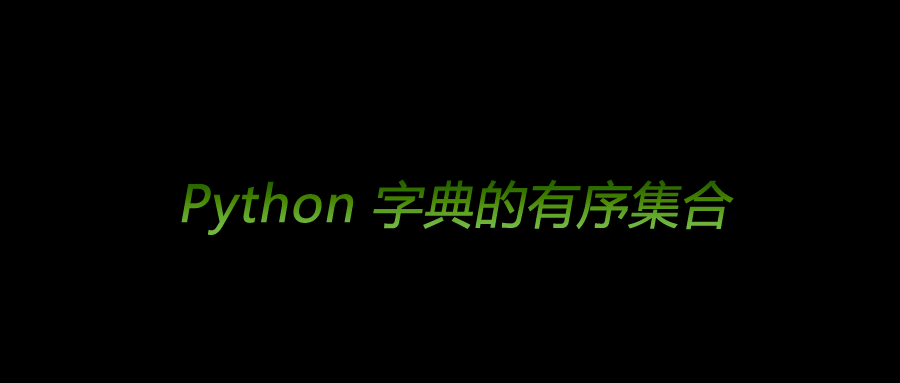Python教程
发现一个秘密:既python3.6之后字典竟然变成了有序集合,我再次验证了一下!
本文主要是介绍发现一个秘密:既python3.6之后字典竟然变成了有序集合,我再次验证了一下!,对大家解决编程问题具有一定的参考价值,需要的程序猿们随着小编来一起学习吧!
高版本我一直使用的是3.8的版本,我先用python3.8的版本来测试查看是不是会产生有序的字…
test_dict = {'o': 1,'p': 2,'q': 3,'r': 4,'s': 5,'t': 6}
使用ksys()函数验证字典的键是否有序
print(test_dict.keys()) # dict_keys(['o', 'p', 'q', 'r', 's', 't']) # Process finished with exit code 0
遍历字典再次验证
for key,value in test_dict.items():
print(key,value)
# dict_keys(['o', 'p', 'q', 'r', 's', 't'])
# o 1
# p 2
# q 3
# r 4
# s 5
# t 6
发现python3.8版本的字典集合真的变成有序字典了。最后,找个3.6以下的版本再来验证一番,使用同样的数据来进行验证
# Python 2.7.18 (v2.7.18:8d21aa21f2, Apr 20 2020, 13:25:05) [MSC v.1500 64 bit (AMD64)] on win32
# Type "help", "copyright", "credits" or "license" for more information.
# >>> test_dict = {'o': 1,'p': 2,'q': 3,'r': 4,'s': 5,'t': 6}
# >>> print(test_dict.keys())
# ['o', 'q', 'p', 's', 'r', 't']
# >>>
首先keys()函数遍历的键就是无序的
# >>> for key,value in test_dict.items():
# ... print(key,value)
# ...
# ('o', 1)
# ('q', 3)
# ('p', 2)
# ('s', 5)
# ('r', 4)
# ('t', 6)
最后,遍历的键值都是无序的。今天就到这里了,小编才加完班该回家了!
这篇关于发现一个秘密:既python3.6之后字典竟然变成了有序集合,我再次验证了一下!的文章就介绍到这儿,希望我们推荐的文章对大家有所帮助,也希望大家多多支持为之网!
您可能喜欢
-
用FastAPI掌握Python异步IO:轻松实现高并发网络请求处理01-03
-
封装学习:Python面向对象编程基础教程01-02
-
Python编程基础教程12-28
-
Python编程入门指南12-27
-
Python编程基础12-27
-
Python编程基础教程12-27
-
Python编程基础指南12-27
-
Python编程入门指南12-24
-
Python编程基础入门12-24
-
Python编程基础:变量与数据类型12-24
-
使用python部署一个usdt合约,部署自己的usdt稳定币12-23
-
Python编程入门指南12-20
-
Python编程基础与进阶12-20
-
Python基础编程教程12-19
-
python 文件的后缀名是什么 怎么运行一个python文件?-icode9专业技术文章分享12-19
栏目导航


